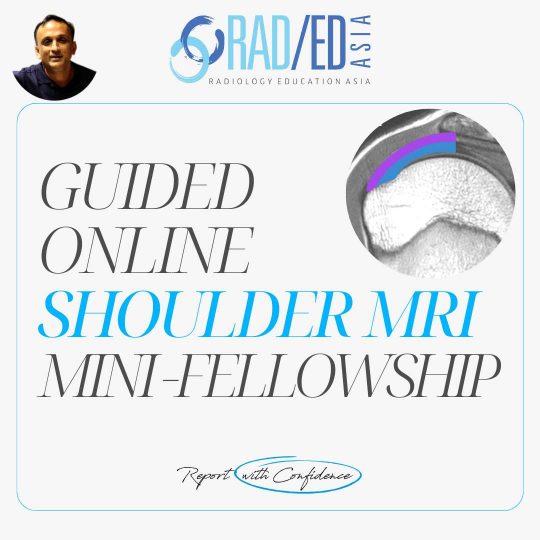
MRI SHOULDER: PARALABRAL CYSTS, DENERVATION AND PARSONAGE TURNER SYNDROME
DENERVATION: Causes & What does it look like:
On MRI muscles around the shoulder can show features of denervation. So, what are the causes and what does it look like. Most commonly its due to nerve compression from a paralabral cyst secondary to a labral tear (usually a SLAP tear). It can also be due to brachial neuritis (Parsonage Turner Syndrome) with no evidence of a compressing mass. In this post we look at paralabral cysts and in the next post at Parsonage Turner Syndrome.
ANATOMY:
The suprascapular nerve supplies the supra and infraspinatus muscles. The main branch runs in the suprascapular notch and divides into two branches one supplies supraspinatus and the second exits via the spinoglenoid notch and runs in the groove inferior to the notch and supplies infraspinatus.

Image Above: Red arrow suprascapular notch. Purple arrow spinoglenoid notch. Gold arrow inferior to spinoglenoid notch where branch to infraspinatus runs.


Image Above: Multiloculated cyst (red arrow) lying in the suprascapular notch where it could potentially compress the suprascapular nerve. No evidence of denervation, muscle signal normal.

Image Above: Suprascapular and spinoglenoid notch cyst (orange arrow) with denervation of infraspinatus (orange arrow) but no denervation of supraspinatus (yellow arrow). Acute denervation as infraspinatus is high signal on PDFS with no evidence of volume loss of the muscle. fatty replacement of the muscle would be better assessed on a non-fat sat PD or T1.

- Join our WhatsApp RadEdAsia community for regular educational posts at this link: https://bit.ly/radedasiacommunity
- Get our weekly email with all our educational posts: https://bit.ly/whathappendthisweek



















